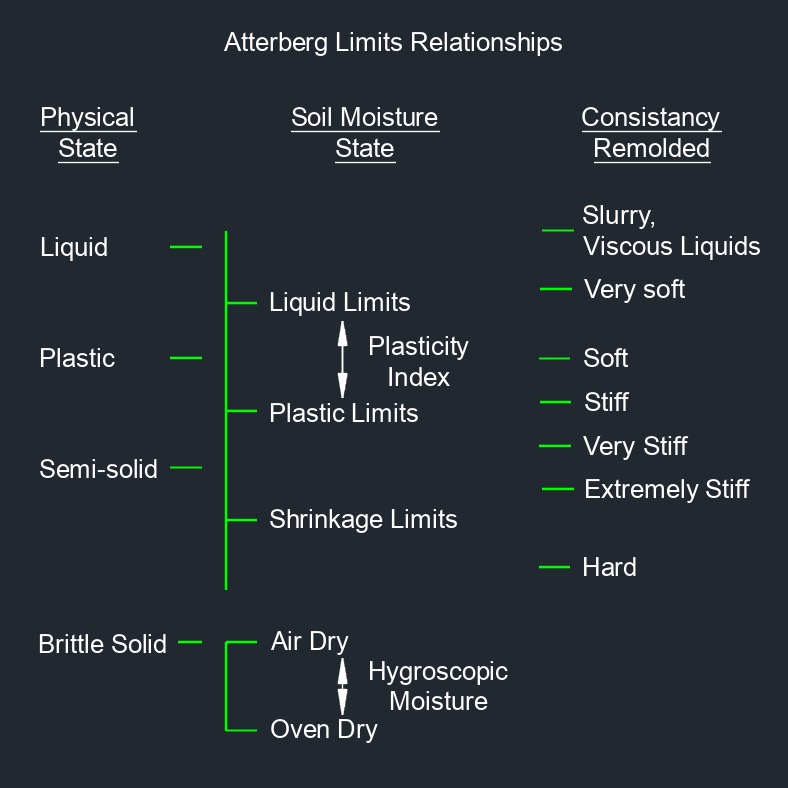Atterberg Indexes
 Atterberg indexes is a set of soil consistency limits used to classify the fine-grained soils (mainly clays and silts) based on their moisture content. These indexes help define the behavior of soils in different moisture conditions, ranging from a solid to a liquid state.
Atterberg indexes is a set of soil consistency limits used to classify the fine-grained soils (mainly clays and silts) based on their moisture content. These indexes help define the behavior of soils in different moisture conditions, ranging from a solid to a liquid state.
Liquid Limit (LL) (Liquid Index)
- Definition - The water content at which soil changes from a plastic state to a liquid state.
- Test - A standard test (typically using a Casagrande apparatus) measures the water content at which the soil can just flow under its own weight.
- Importance - It helps determine the upper limit of the plastic state and is used to assess soil's compressibility and shear strength when wet.
Plastic Limit (PL) (Plastic Index)
- Definition - The water content at which soil changes from a semi-solid state to a plastic state.
- Test - The soil is rolled into threads of 3mm diameter. The plastic limit is the moisture content at which these threads begin to crumble.
- Importance - It marks the lower boundary of the plastic state, indicating how dry the soil can be while still maintaining some plasticity.
Shrinkage Limit (SL) (Consistancy Index)
- Definition - The water content at which the soil stops shrinking upon further drying.
- Test - It is determined by drying a soil sample and measuring the volume change as the soil dries.
- Importance - It provides insight into the soil's behavior during drying and potential shrinkage, which is particularly important in construction.
Plasticity Index (PI)
- Definition - The difference between the liquid limit and the plastic limit (PI = LL - PL).
- Importance - The PI quantifies the range of water content where the soil behaves plastically. Higher values indicate more plastic, clay-like soils, while lower values suggest silty or non-plastic soils.
Applications of Atterberg Limits
Soil Classification - These indexes help classify soils into various groups in systems like the Unified Soil Classification System (USCS) and the American Association of State Highway and Transportation Officials (AASHTO) classification system.
Engineering Design - The limits guide the design of foundations, embankments, and other structures that depend on the soil's behavior under load and moisture variations.
Predicting Soil Behavior - They help predict how soil will react to changes in moisture, which is crucial for construction projects involving earthworks or pavements.
Together, the Atterberg indexes provide a standardized way to describe and compare the properties of fine-grained soils in different states of moisture content.

